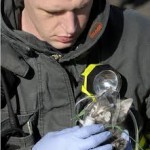Did you know that thousands of adults experience life-threatening choking incidents every year? It’s a frightening statistic, but it’s one that emphasizes the crucial role of CPR in saving lives. This article will discuss the specifics of administering CPR to unresponsive adults who are choking, differentiating it from the standard procedure used in cases of cardiac arrest. Our objective is simple yet ambitious: to arm you with knowledge and confidence, turning you into a potential lifesaver.
Understanding CPR – What It Is and Why It Matters
Cardiopulmonary Resuscitation is a life-saving technique used in emergencies when a victim’s breathing or heartbeat has stopped. While most people associate CPR with heart attacks, it’s also crucial for victims of choking where the airway is blocked.
What is CPR?
CPR is a combination of chest compressions and rescue breaths that help circulate oxygenated blood to vital organs when the heart has stopped pumping. The goal is to maintain a minimal level of blood flow to the brain and heart until emergency medical services arrive. CPR buys time, keeping the brain alive until the heart can be restarted, either by medical professionals or through the use of an automated external defibrillator (AED).
Why It Matters
Immediate Response – Time is crucial during cardiac arrest or choking. Without oxygen-rich blood circulating through the body, irreversible brain damage can occur within minutes. Performing CPR immediately after someone collapses can double or even triple their chances of survival.
Community Resilience – CPR is not just for healthcare professionals. Anyone can learn CPR, and having more people trained in it increases the likelihood of someone receiving help quickly during an emergency, especially in areas where emergency medical services may take longer.
Empowerment and Confidence – Knowing CPR empowers individuals to take action in emergencies. It can provide a sense of confidence and readiness to handle unexpected situations, whether at home, work, or in public spaces.
Peace of Mind – Learning CPR can offer peace of mind, knowing that you have the skills to potentially save a life. This confidence can translate into a willingness to act swiftly and decisively during emergencies rather than feeling helpless or paralyzed by fear.
Support for Loved Ones – Understanding CPR isn’t just about helping strangers. It’s about being prepared to assist friends, family members, or even bystanders in distress. Being able to administer CPR to a loved one until professional help arrives can make a significant difference in their outcome.
The Difference Between CPR for Cardiac Arrest and Choking
The primary difference lies in the initial approach: For a choking victim, the focus is clearing the airway before proceeding to chest compressions or rescue breaths.
Components of CPR: AED, Compressions, and Breaths
Overview of AEDs – While AEDs are pivotal in cardiac emergencies, their role in choking incidents is limited.
The role of chest compressions – Essential in maintaining blood flow, even more so when the airway is blocked.
Importance of rescue breaths – In choking cases, ensuring the airway is clear before attempting rescue breaths is vital.
The Chain of Survival – Timely Interventions
Quick actions can significantly increase the chances of survival in choking incidents. This includes:
- Early access to emergency response
- Prompt initiation of CPR
- When appropriate, early defibrillation
- Ensuring advanced life support and proper post-care are available as soon as possible.
Identifying a Choking Victim – Vital First Steps
Identifying a choking victim and taking immediate action are crucial steps in potentially saving a life during a choking emergency.
Signs of Severe Choking in Adults
Look for the inability to speak, breathe, or cough forcefully, the universal sign for choking (hands clutching the throat), and a change in skin, lips, and nail color to blue due to oxygen deprivation.
Immediate Actions – What to Do Before CPR
Encourage coughing if possible. If not, deliver five sturdy back blows followed by five abdominal thrusts, also known as the Heimlich maneuver. This can sometimes be enough to dislodge the obstruction.
When to Start CPR – Transitioning from First Aid
If the victim becomes unresponsive, it’s time to call for emergency help and prepare to administer CPR. Your prompt action can make all the difference.
Administering CPR to a Choking Victim – A Step-by-Step Guide
Here’s a step-by-step guide for administering CPR when a victim is choking:
Adjustments in CPR for Choking Victims
Checking for responsiveness and breathing takes precedence, with added emphasis on looking for and removing visible obstructions before starting compressions or breaths.
Chest Compressions – Technique and Frequency
Ensure correct hand placement and posture for effective compressions, aiming for a depth of about 2 inches (5 cm) at a rate of 100 to 120 compressions per minute. Adapt your approach for elderly victims or those with osteoporosis to avoid further injury.
Rescue Breaths – Ensuring Safe Delivery
Take extra precautions to check the airway for obstructions and adapt the head-tilt and chin-lift maneuver if standard methods are ineffective, ensuring you do not exacerbate the blockage.
Advanced Considerations and Recovery
Handling Complications – Common Issues and Solutions
Be prepared for complications such as objects that are difficult to dislodge, broken ribs, or aspiration risks, and know how to respond to each.
Recovery Position and Post-Choking Care
Once the object is dislodged and normal breathing resumes, placing the victim in a recovery position helps maintain an open airway and monitor for any delayed complications.
Preventing Choking – Tips and Strategies
Promoting safe eating practices and advocating for widespread CPR and first aid training can prevent many choking incidents before they occur.
To acquire online CPR certification and successfully respond during emergencies, visit Simple CPR and choose from the available CPR certification courses, which typically include Basic CPR, CPR/AED, and CPR/AED/First Aid options. After registering or signing up for an account, select the course format that fits your needs. Once you complete the course modules and pass the final assessment or exam demonstrating your proficiency and understanding of CPR skills, Simple CPR issues your CPR certification, which you can print immediately. Keep track of your CPR certification expiration date and renew it to maintain your credentials and stay prepared to respond to cardiac emergencies effectively.
Understanding and correctly applying CPR techniques tailored explicitly for choking adults can make a monumental difference in emergency situations. Your actions, informed by this knowledge, could very well be life-saving. Let’s be proactive in learning, practicing, and spreading awareness about CPR. Together, we can stand prepared to offer a helping hand when it’s needed the most.
FAQs
Q: Can I perform the Heimlich maneuver on myself if I am choking?
A: Yes, you can use your hands or a sturdy object to apply pressure to your abdomen, thrusting upward to dislodge the object.
Q: How often do I need to renew my CPR certification?
A: It’s generally recommended that you renew your CPR certification every two years to stay up-to-date with the latest guidelines. With Simple CPR, you can renew your CPR certification in 60 mins or less.
Q: Are there different CPR methods for children and adults?
A: Yes, CPR techniques and considerations vary between adults, children, and infants, primarily in the force and depth of compressions. Simple CPR offers CPR and first-aid courses for adults, children, and infants.
Q: What should I do if my CPR attempts don’t seem to work?
A: Continue performing CPR until medical help arrives. Sometimes, it takes time for CPR to yield visible results.
Q: How can I control the fear of causing harm while performing CPR?
A: Remember, in a life-threatening situation, the benefit of performing CPR far outweighs the risk of potential injury. Training and practice can also boost your confidence.
FAQs on CPR for Choking Victims
- What is the main difference in performing CPR on an unresponsive choking victim?
- The main difference in performing CPR on an unresponsive choking victim is the need to first attempt to clear the airway of the obstruction before starting chest compressions.
- How to perform CPR on an unresponsive, choking adult?
- To perform CPR on an unresponsive, choking adult, first attempt to clear the airway with back blows and abdominal thrusts. If the obstruction persists, begin CPR with chest compressions and rescue breaths.
- How to perform CPR on an unresponsive choking infant?
- To perform CPR on an unresponsive, choking infant, start with back blows and chest thrusts to clear the airway. If the obstruction persists, initiate CPR with chest compressions and rescue breaths, adjusting the technique for the infant’s smaller size and delicate structure.
- What do you do if someone is choking and becomes unresponsive?
- If someone is choking and becomes unresponsive, immediately begin CPR by laying the person flat, starting chest compressions, and giving rescue breaths. Continue CPR until emergency medical services arrive or the obstruction is cleared.
- What are two key differences when giving care to an unresponsive, choking adult or child?
- Two key differences when giving care to an unresponsive, choking adult or child include the strength of the abdominal thrusts and the depth of chest compressions, which are adjusted according to the victim’s age and size.
SEO Meta Description: Discover the crucial differences in administering CPR to an unresponsive adult choking victim, including step-by-step guidance and lifesaving tips. Learn to act swiftly and effectively in emergencies.




